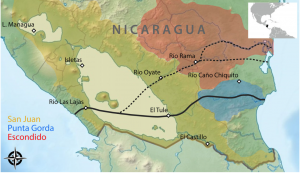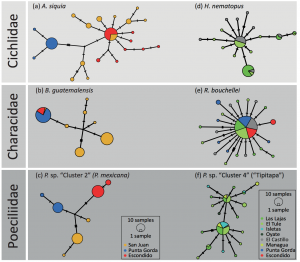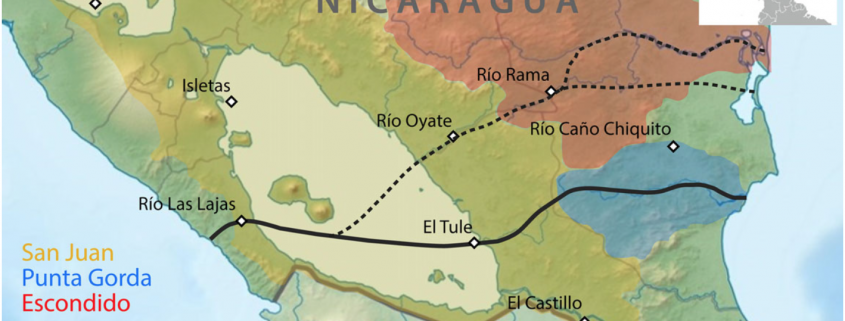The imperiled fish fauna in the Nicaragua Canal Zone
By Nicole Suren, SRC intern
Plans for a new canal through the isthmus of Nicaragua have just been approved by the Nicaraguan government with little to no restrictions on what preexisting waterways can be used as part of this potential new shipping route. The currently proposed route was planned based on economic and technical considerations, but ecological concerns were not factored into the planning, leading to a variety of potential ecological problems due to the construction of the canal. These ecological detriments include overexploitation of the environment, increased water pollution, water flow modification, destruction or degradation of habitat, and the establishment and spread of non-native species. The currently proposed route is of special concern because it not only passes through Lake Nicaragua, a freshwater ecosystem of very high socioeconomic importance, but also because it connects two currently isolated drainage basins, the San Juan drainage basin and the Punta Gorda drainage basin.

Proposed route (solid line) and alternative routes (dashed lines) of the Nicaragua Canal. The 3 drainage basins involved are San Juan (red), Punta Gorda (blue), and Escondido (yellow). Fish-sampling locations are marked with open diamonds. (Härer et al. 2016)
This study was conducted in order to establish a baseline of biodiversity in the two potentially affected drainage basins, as well as the surrounding basins, so that changes in biodiversity due to the construction of the new canal can be accurately measured and compared against previous levels. The researchers measured biodiversity by taking surveys of the fish in each ecosystem in question with nets, and then sampling two species each from three families of fish that are common in the area. These samples were then used in a DNA analysis, where common sequences of DNA from each species were analyzed for differences. In general, the more similar the DNA sequences, the more closely connected two populations are, and the less similar the DNA sequences, the less closely connected the populations are. Based on the DNA analysis, “populations within the same basin showed almost no genetic differentiation, whereas comparisons across basins exhibited higher differentiation.” This means that populations of fish within the same drainage basin are very similar to each other, while they are quite different from fish in other, unconnected drainage basins. They also found that Punta Gorda and San Juan have 27 species in common, but they also have 24 and 31 species, respectively, that only occur in one basin.

Diagrams showing connectivity between basins (A-C) and within different locations in the San Juan drainage basin (D-F). The sizes of the circles are proportional to the sample sizes, and the proximity of the circles to each other represent how closely connected they are genetically. (Härer et al. 2016)
Measures of biodiversity are important because they can be a direct indicator of how healthy an ecosystem is. In other words, a diverse ecosystem is a healthy ecosystem. Since the San Juan and Punta Gorda ecosystems contain populations that are so distinct from one another (which is one of the ways biodiversity is defined), the proposed connection between the two is potentially detrimental to the health of those environments because the physical barriers maintaining their diversity would be removed, thereby reducing their diversity and health. Because of these effects, the authors strongly recommend that the precautionary principle be used, and that a more ecologically sound route for the canal be chosen before starting construction.
Works Cited
Andreas Härer, Julián Torres-Dowdall, Axel Meyer. “The Imperiled Fish Fauna in the Nicaragua Canal Zone.” Conservation Biology, vol. 00, no. 0, 2016, pp. 1-10, doi:DOI: 10.1111/cobi.12768




Leave a Reply
Want to join the discussion?Feel free to contribute!